If you’re in a hurry and want to skip the thesis and go right to my favorite paint, go here for all my favorite watercolor supplies and the best watercolor paint. For those of you who prefer to know the “why” and hear about all the brands I've tried and loved over the last decade or so as a watercolor artist, keep reading. I'm not scratching the surface here. This is the ultimate guide to the best watercolor paint.
If you're just getting into watercolor painting and want a crash course, make sure to grab my Complete Beginner's Guide to Watercolor Painting (for FREE) here. I also have a ton (hundreds) of YouTube tutorials that you can binge on demand here.
Disclosure: This post is sponsored by Dixon Ticonderoga Co. and the St. Cuthbert's Mill brand, but all opinions are my own. This post also contains affiliate links which means for some product purchases, I may earn a small commission—at no extra cost to you. I only share my faves and it helps support the free content I share! Thank you!
The Ultimate Guide to Watercolor Paint
Now, let's jump in. Are you overwhelmed by what type of watercolor paint to use? Or which brand? Before I get into it, let me just say this…every artist is different and every artist’s budget is going to be different. The best watercolor paint for YOU is going to be the one you can afford and that’s going to be most appropriate for the stage of learning you’re at. I have a great video on how to spend less $$$ on watercolor paint here. With that said, I am going to break down the basics of what you should know today.
Related: The Ultimate Guide to Watercolor Brushes and The Ultimate Guide to Watercolor Paper
Professional Level vs. Cotman/Student Level Paint
Higher-quality watercolor paint is usually going to equal a much more enjoyable process and easier learning curve. More on that in a second.
It may be tempting to cut corners on costs with paint by just snagging the random set at Walmart or Michaels. But trust me, you’ll end up purchasing those higher-end, quality paints down the road anyways and telling yourself, “Man, I should’ve just bought these from the get go.” Ask me how I know.
The beauty about watercolor paint is that it’s a long-term investment. If used properly, you can use and reuse watercolor paint and get a really long stretch out of one tube or pan. For example, a 14mL tube of professional-level watercolor paint might seem small, but I paint every single day and it would take me about 6-9 months to go through this whole tube.
Watercolor paint is made from pigments
Why is this? Well, watercolor paint is typically made from pigments, substances like ochre or charcoal, minerals, rocks, etc. This powder is combined with some form of binding agent, usually gum arabic and some other fillers. When a watercolor paint is considered high quality, that usually means that the pigment used is either rare and harder to find, or there’s more pigment in the tube or pan compared to the student/cotman version of that same color.
If you're curious, watch this video to see how I made my own watercolor paint!
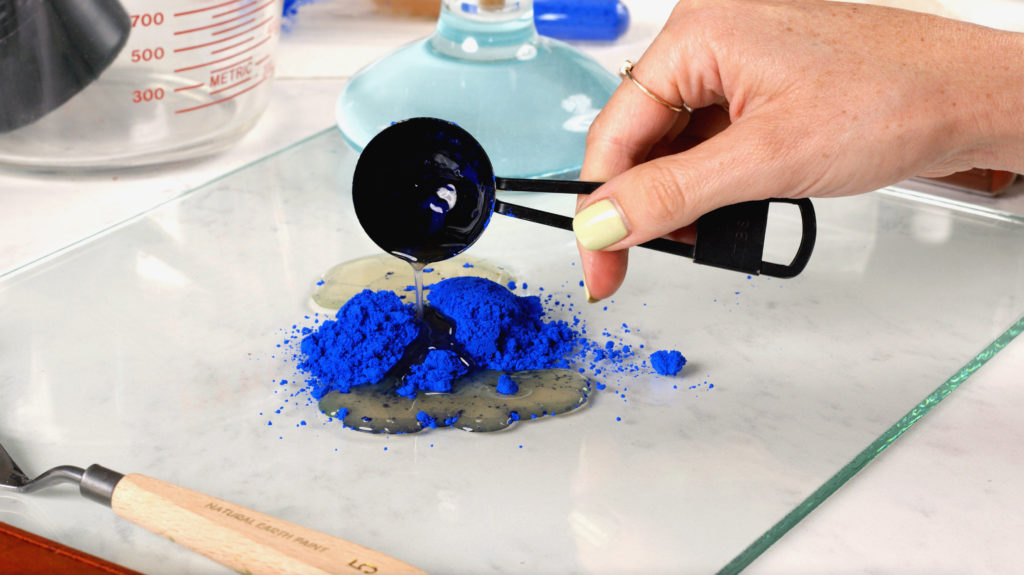
For example, Cobalt Blue Professional Level paint is more expensive than the Cobalt Blue Student Level product from the same brand, same 14mL tube because the student level product has more filler and less pigment! Because of this, the vibrancy of the pigment suffers and it doesn’t blend, bloom and bleed like the professional-level product will. Is the price of the student level hue significantly cheaper than the professional level? Yep! But if you want to enjoy the process of painting with watercolor and love the results you’re getting, you may have an easier time with the professional level paint. I know that might not be what you want to hear but I wouldn't say it if it weren't true.
Watercolor Paint Types
Let's move on. So first, Watercolor comes in many forms, shapes, and sizes. Below, I'm going to go through all the different types (and the pros and cons for each).
Watercolor Pans
Some artists absolutely love working with pan sets like this one by Maimeri (really great quality and what I used in one of my recent retreats). There’s no major difference between working with the tubes of paint vs. pans if you’re buying the same quality, brand, and colors. It’s the exact same, except for the fact that it’s already in pans…but here’s my pros and cons list:
Pros:
- Compact and super easy to travel with. We love that!!
- Ready to paint right away. No waiting for the colors to dry in the dishes!
- You can make your own pan set if you want using an empty set like this
Cons:
- Usually the pans in the set are too close together, making it difficult to use bigger brushes without creating muddy colors.
- With the pre-made pan sets, there may be colors you don't use as often for your style.
Watercolor Tubes
This is the type of watercolor pigment I work with the most (though it’s recently shifting to more liquid watercolors these days…more on that below). I’m a huge fan of the MaimeriBlu Professional Level Watercolor Tubes. I basically create my own set (all the colors I use are HERE) by squeezing about a quarter-sized amount into the dishes of this palette. Then I let the pigment dry in the dishes! I also have a six pack of colors that I picked out with MaimeriBlu to sell in a little set here. These are some of my favorite colors from that line.
This ends up feeling just like a pan set where the watercolor paint comes dried in half pans or full pans, I’m essentially creating a custom pan set with the colors I know and love! Too much gushing on watercolor tubes, I know, so let’s get into the pros and cons list:
Pros:
- Get the exact color you want. There are millions (exaggeration maybe?) of different colors that come in tubes of watercolor paint. It can be overwhelming, but this makes it easier to completely customize your palette and get exactly what you want.
- Easier to keep clean. You’re using an actual palette and not a pan set so there’s space to roam and mix in the mixing wells. There’s also usually more space between the dishes where the paint sits, so it won’t get as messy.
- Just like the pan sets, paint from watercolor tubes can be reactivated by adding water! So economical and this also makes it easy to travel with!
Cons:
- Can be annoying to have to wait for the colors to dry (even though you CAN use the paint straight from the tube!).
- More $$$. Tubes of paint are typically more money than just buying a pre-made pan set.
- Takes up more space in your office/studio/house. I have tubes everywhere!

Liquid Watercolor
I’m OBSESSED with Liquid Watercolor paint right now, I’ll save the why for the “pros” list below, but if you’re wondering what it is, liquid watercolor is typically dye-based ink or acrylic ink that’s water soluble. My favorite sets are this Daler Rowney one, this Winsor and Newton one and this Bombay set. I also like using this white Bombay ink for details or mixing up pastel colors! I prefer mixing and matching from all three of these sets and using an eyedropper to combine the colors into concoctions I save in these glass jars. Yeah, it's a process. I guess I've become like a mad scientist of watercolor painting over the last few years!
Ok, now let’s get into the pros and cons of this type of watercolor paint:
Pros:
- So friggin vibrant!
- Wet-on-wet technique, bleeding, and blooms are like mini explosions. Way more explosive than using the same technique with tubes or pans!
- Because it’s dye, the color is VERY concentrated…a little bit goes a very long way
Cons:
- Super staining. Again, these are dyes, they pretty much stain the paper right away…which is fine if you don’t want to lift any color! They also stain plastic palettes, which is fine if you don’t mind a “messy” palette. Just something to be aware of.
- The lightfast quality doesn’t compare to tubes or pans, this type of paint fades much quicker, so if you’re selling your original paintings using this type of paint, tell your customers to not hang the piece in direct sunlight!
- More expensive than pan sets and tubes…but WORTH IT IMO!
- Pretty much impossible to use once they dry. This is why I use the glass jars to save the colors instead of mixing up a batch in my palette. Once these colors dry, you cannot reactivate them with water like the others!
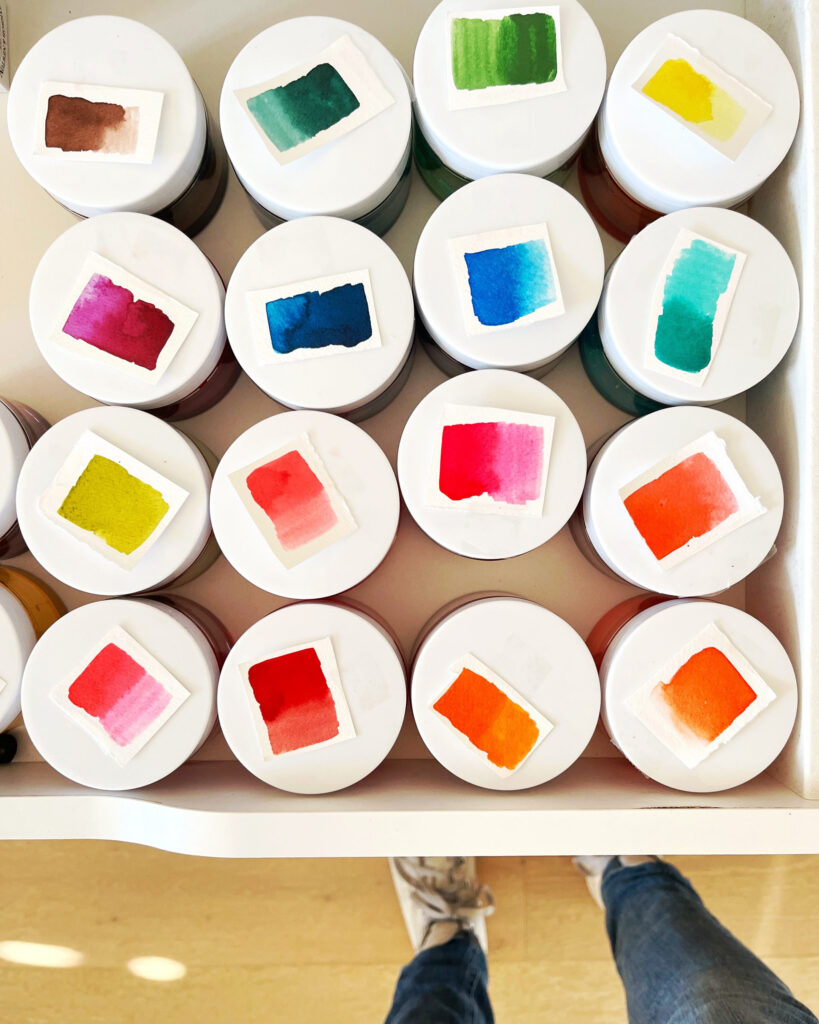
Comparing Watercolor Paints
Ok, now that we’ve discussed professional level vs. student level (here are some of my favorites from Maimeriblu) and the different types of watercolor paint, let's talk about some important factors to consider when you’re picking out your colors:
Lightfastness
Each color is going to have a “lightfastness grade” on the tube or information about the color in the set. Basically this “level” or “grade” refers to how quickly this particular color will fade in the sun. The ratings are I, II, III, and IV, with I being the best and IV being the worst, but just because a color has a “bad” lightfastness grade, doesn’t totally mean you should never use it, let me explain.
Opera Rose is a color known for its vibrancy and neon pink quality. Colors that are more vibrant and hard to mix up manually are typically poor in lightfastness. But don’t fret! Just store these colors in darker areas and if you’re painting with them, it’s great to scan and work with digital versions of these colors vs. hanging up the piece in your home. If you are going to frame an original painting with colors that have a poor lightfastness rating, just make sure they’re framed behind glass (not plexi or plastic) and are not in direct sunlight as they will fade quickly!

Fugitive Colors
This is an expansion on the above term. The colors that have the worst lightfastness rating (aka Opera Rose) are considered fugitive colors. If a color has the word “permanent” or “new” in the name, it’s fugitive. Again, this doesn’t mean you need to avoid them altogether, these are typically some of the most fun colors, just know they’re sensitive to light and best scanned!
Speaking of fun, if you're ready to really dive into the world of watercolor (or work on your art skills and find your unique artistic style), make sure to check out my course, The Art Within. Inside, is everything they should have taught you in Art school (with a heavy emphasis on keeping it fun).
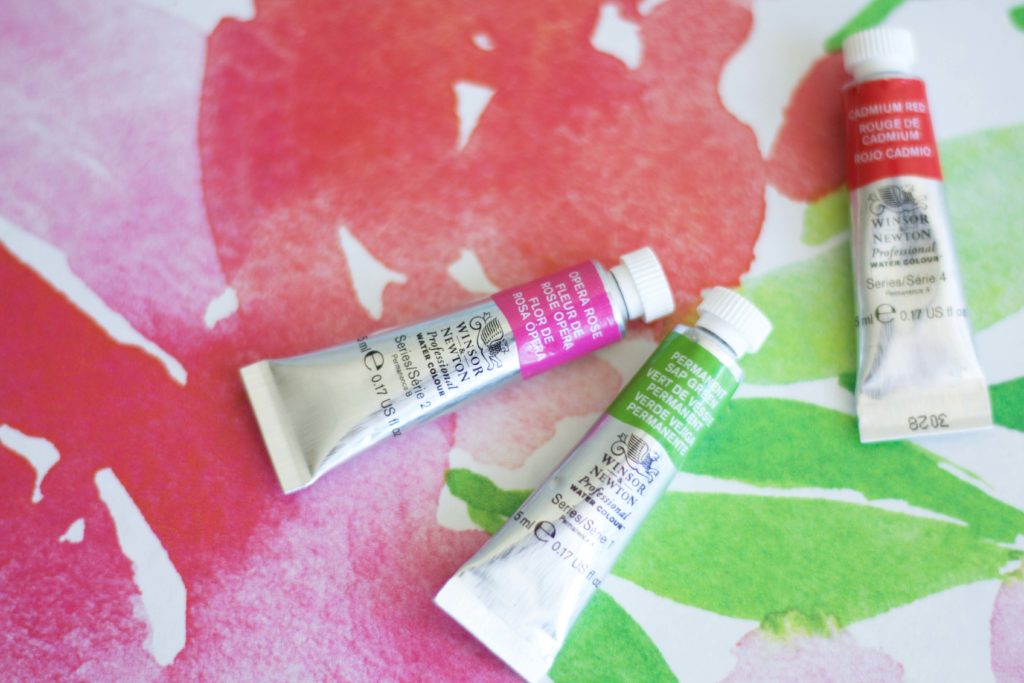
Toxicity
Last on the list of things to consider, is toxicity. Watercolor paint can contain some ingredients that are toxic and potentially harmful to inhale or touch. You’d need to ingest or basically cover your body in paint for it to be harmful, but I am still very mindful of keeping my body as clean as possible (hello autoimmune diseases!), so I have an Air Doctor filter in my office that’s always running and cleaning the air AND I either use gloves when working with more toxic colors or avoid touching at all costs.
If you’re concerned about toxicity, this is why I made the switch from Winsor & Newton to MaimeriBlu. No, their colors aren’t completely non-toxic, but they’re much less.
Best Watercolor Paint Brands To Buy
As you can probably tell by this post, I’m not monogamous when it comes to watercolor paint brands. I love to mix and match and use colors from a variety of brands and TYPE of watercolor paint, heck, I even love throwing gouache paint into the mix!!
With that said, I do think I’ve found the BEST quality and most fun types/brands to play with (all linked right here on Amazon), so definitely check ‘em out, but play around and see what you prefer! Every artist is different and you never know what you’re going to fall in love with! Then, send me a DM on Instagram and let me know!
Frequently Asked Questions About Watercolor Paint
As someone with hundreds of watercolor tutorials up on YouTube, here are the questions I'm most frequently asked about the brands and types of watercolor paint I use.
How do I choose between watercolor pans and tubes?
I got into more detail above but it really comes down to preference and convenience. Pans are compact and great for travel, while tubes allow you to mix your own colors and are more versatile for larger projects. I personally love using tubes for the flexibility they offer.
What are liquid watercolors, and how do they differ from traditional watercolor paints?
Liquid watercolors are dye-based and incredibly vibrant. They’re great for techniques like wet-on-wet and produce explosive blooms and bleeds. However, they’re more staining and less lightfast compared to traditional tube or pan watercolors.
How can I tell if a watercolor paint is high quality?
Look for paints with high pigment concentration and good lightfastness ratings (I or II). Professional-grade paints usually have less filler, resulting in more vibrant and consistent colors.
Are expensive watercolor paints worth the investment?
Absolutely! 1000x yes. Higher-quality paints provide better pigment, more vibrant colors, and smoother blending. They’re a long-term investment since a little goes a long way, and you’ll enjoy the painting process much more. Like I said earlier, you can start with student-grade or less expensive options if you want, but when you finally switch you'll kick yourself for taking so long.
How should I store my watercolor paints?
Keep your paints in a cool, dry place away from direct sunlight. For liquid watercolors, store them in airtight containers to prevent drying out. For tubes and pans, make sure they’re sealed properly to avoid drying and cracking.
Where can I learn more about watercolor painting and the best supplies for watercolor?
First, for more tips and detailed guides on watercolor painting, don't forget to grab your Complete Beginner's Guide to Watercolor Painting for free! If you're ready to dive deeper into the world of watercolor, you might also enjoy my best-selling watercolor books (and the companion course that goes with them!).
For a deeper understanding of art beyond exclusively watercolor, you can also sign up for The Art Within, where I share everything you need to know to take your art skills to the next level (and cultivate a style that is uniquely yours). I'd love to welcome you inside!
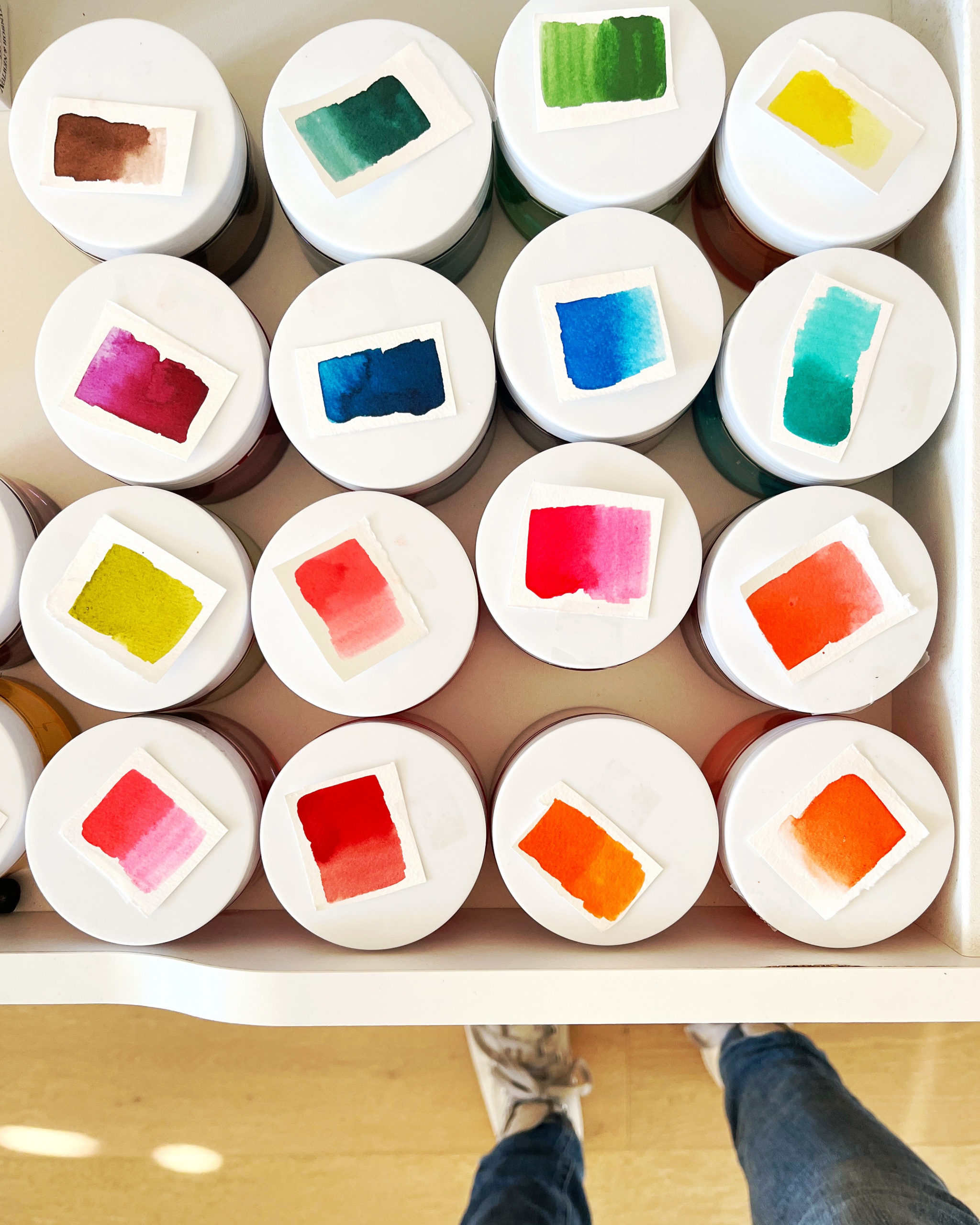

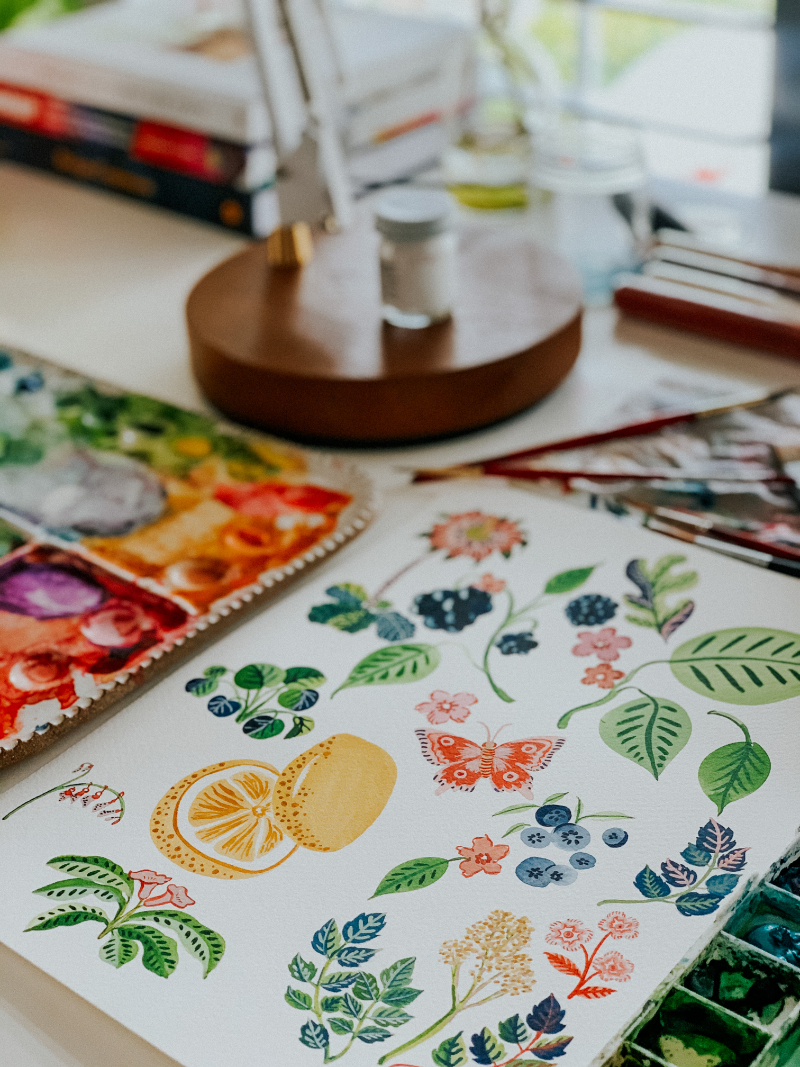










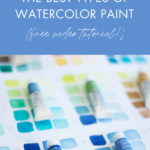
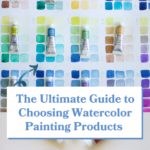
Hi,
Former professional old fashion paste-ups & mechanicals, graphic designer, and B&W illustration for some years. Some painting in acrylic, and more B&W drawing for myself continuing for decades.. (Art HS, Art College)
Enjoyable refresher on WC, and learning new info as well. I loved a glimpse of that peony in the hand made decor front page. Also amazed to see such Big WCs on your “front pages”! Yeah, I did big oil paintings in College, much smaller past then. Also never would have thought to try black paper! Very interesting, and nice results. Love the control you also have on your flower petals!
If I decide to add this to my slew of art pursuits, it’ll take a good while. In the meantime I’m enjoying viewing each of the single colors of this Italian brand I can’t remember how to spell. 😀
Congratulations on your years of a creative business. Happy, healthy, safe Holidays!
cc*